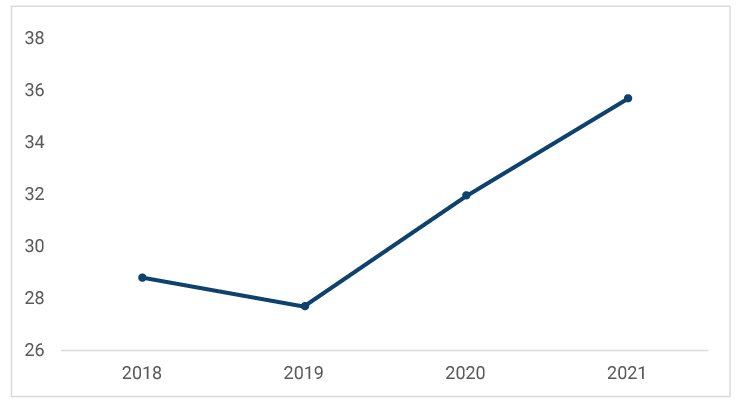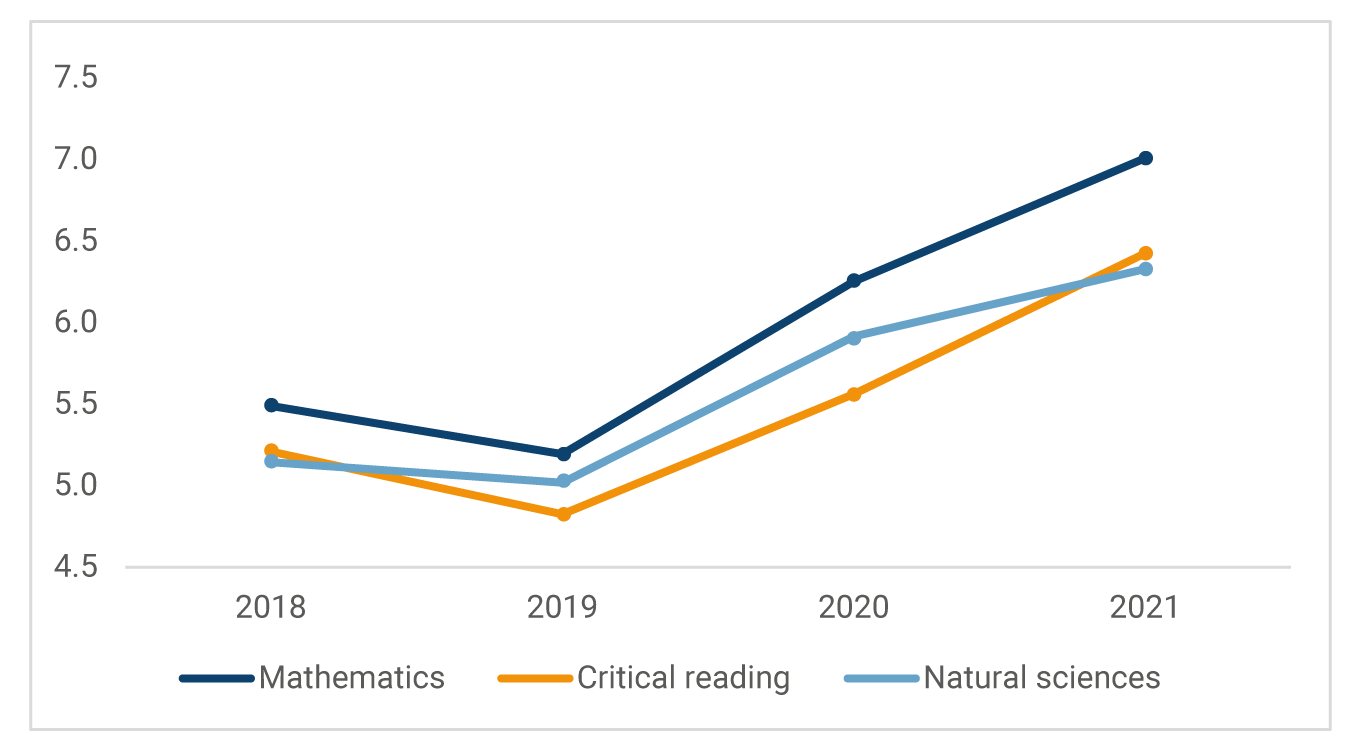In March 2020, the Covid-19 pandemic disrupted educational activities usually carried out in person. To mitigate the cost of closing educational institutions, governments and school and university administrators chose to maintain training processes through virtual tools and other means. However, distance education has various limitations related to the reduction in learning time, changes in the way students interact, unequal access to information technologies, widening gaps in academic performance, loss of motivation, and stress for students and teachers. Virtual education also posed challenges to the education system, especially to teachers, who were unprepared to teach through virtual methods and had to adjust teaching strategies to motivate students and adapt examination methods.
A recent document published in Banco de la República’s (the Central Bank of Colombia) Borradores de Economía series describes the evolution of the main indicators of the primary and lower and upper secondary education system in Colombia during the pandemic. The document also evaluates the impact of the cessation of in-person classes based on the effects of a pilot hybrid learning plan on the results of the Saber 11 test.
The document shows that, due to the pandemic, students were transferred from private to public institutions, dropout and grade repetition rates increased, and gaps in students’ academic performance widened. In the case of the gaps, the pandemic increased the differences in Saber 11 test results between students from public and private schools, between students from rural and urban areas, and among students with different socioeconomic conditions. In particular, student performance improves with socioeconomic status, with parents’ level of education and employment, and with access to information technologies.
Graphs 1 and 2 show the gaps in Saber 11 test scores between private and public schools for the period 2018-2021, both for the overall result and by areas of knowledge. The two graphs show that between 2018 and 2019, these gaps narrowed, but then, as a result of the pandemic, widened in 2020 and 2021. The widening of these gaps could be attributed to improved access to information technologies and greater support from schools and families to students in private schools. It is worth noting that the largest gap is observed in mathematics areas.
Graph 1. Overall score gaps in the Saber 11 test
Private schools - Public schools 1

Source: Colombian Institute for the Assessment of Education (ICFES)
Graph 2. Score gaps by areas of knowledge in the Saber 11 test
Private schools - Public schools 2

Source: Colombian Institute for the Assessment of Education (ICFES)
A pilot hybrid alternate plan implemented between September and December 2020, consisting of the gradual return to in-person classes in some randomly selected schools, allows for a preliminary assessment of the impact of school closures during the pandemic. Table 1 shows the statistical comparison of the Saber 11 test scores of students who benefited from the program and those who did not. As shown in the Table, the hybrid learning plan generated better results in the Saber 11 tests in the overall score and by areas of knowledge compared to students who remained in the distance learning scheme.
The coefficients in the Table show that, in the case of the overall result, for example, those students who participated in the alternation program obtained a score 8.103% higher than those who remained in the distance learning scheme, with a confidence level of 99%. Similarly, the results for each area of knowledge evaluated are interpreted. These results were obtained even though the hybrid learning plan was developed during a short period of time before the test, and all the evaluated students attended most of the academic training cycle under the in-person learning system. Thus, in-person education, even in a limited hybrid learning plan, such as the one evaluated in the document, shows a positive effect on student’s academic achievement.
Table 1. Comparison between the scores of the schools that participated in the hybrid learning plan and those that remained in the distance learning scheme
| Effect of the plan | Global | Critical reading | Mathematics | Natural sciences |
| 8.103*** 2.91 | 1.929*** 3.64 | 1.097** 1.988 | 1.405** 2.318 | |
| Effectiveness rate 3 | Global | Critical reading | Mathematics | Natural sciences |
| 3.38% | 3.78% | 2.24% | 3.03% |
Source: Borradores de Economía 1179. Banco de la República.
The increasing gaps during the pandemic and the substantial impact on learning revealed by the pilot hybrid learning plan highlight the importance of in-person education at the primary and secondary levels. In addition, these results draw attention to the need to adopt measures to recover losses in the development of cognitive and non-cognitive skills during quarantine and virtual education periods.
1 Hypothesis test for a difference in means indicates that the gap between the overall Saber 11 test scores of private and public schools is statistically significant for each year.
2 Hypothesis tests for a difference in means indicates that the gap between Saber 11 test scores by area of knowledge between private and public schools is statistically significant for each year.
3 The effectiveness rate measures the relative variation between the hybrid learning plan gain over the average scores obtained by students who did not participate (remained in distance education).

































































